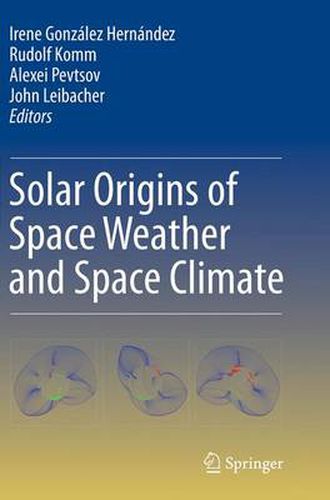Readings Newsletter
Become a Readings Member to make your shopping experience even easier.
Sign in or sign up for free!
You’re not far away from qualifying for FREE standard shipping within Australia
You’ve qualified for FREE standard shipping within Australia
The cart is loading…






Presents an overview of recent research on the original of solar phenomena that affect Earth’s technological systems.
This topical issue is based on the presentations given at the 26th National Solar Observatory (NSO) Summer Workshop held at the National Solar Observatory/Sacramento Peak, New Mexico, USA from 30 April to 4 May 2012. This unique forum brought together experts in different areas of solar and space physics to help in developing a full picture of the origin of solar phenomena that affect Earth’s technological systems. The articles include theory, model and observation research on the origin of the solar activity and its cycle, as well as a discussion on how to incorporate the research into space-weather forecasting tools.
This volume is aimed at graduate students and researchers active in solar physics and space science.
Previously published in Solar Physics, Vol. 289/2, 2014.
$9.00 standard shipping within Australia
FREE standard shipping within Australia for orders over $100.00
Express & International shipping calculated at checkout
Presents an overview of recent research on the original of solar phenomena that affect Earth’s technological systems.
This topical issue is based on the presentations given at the 26th National Solar Observatory (NSO) Summer Workshop held at the National Solar Observatory/Sacramento Peak, New Mexico, USA from 30 April to 4 May 2012. This unique forum brought together experts in different areas of solar and space physics to help in developing a full picture of the origin of solar phenomena that affect Earth’s technological systems. The articles include theory, model and observation research on the origin of the solar activity and its cycle, as well as a discussion on how to incorporate the research into space-weather forecasting tools.
This volume is aimed at graduate students and researchers active in solar physics and space science.
Previously published in Solar Physics, Vol. 289/2, 2014.